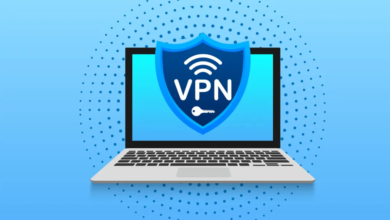
Securing Mobile Devices: Tips and Best Practices
In an age where mobile devices are integral to our daily lives, the need to secure them has never been more critical. Our smartphones and tablets hold a treasure trove of personal information, from sensitive emails and contacts to banking details and personal photos. As mobile threats continue to evolve, taking steps to protect these devices is paramount. Here’s a comprehensive guide to securing your mobile devices.
Understanding Mobile Threats
Before diving into security measures, it’s important to understand the types of threats that target mobile devices:
- Malware and Viruses: Malicious software designed to harm your device or steal information.
- Phishing Attacks: Fraudulent attempts to obtain sensitive information by disguising as a trustworthy entity.
- Data Breaches: Unauthorized access to personal data stored on your device.
- Network Attacks: Exploitation of unsecured Wi-Fi networks to intercept data transmission.
- Physical Theft: The risk of losing your device or having it stolen, leading to potential data loss.
Tips and Best Practices for Securing Mobile Devices
1. Keep Your Software Updated
Regularly updating your operating system and apps is crucial. Updates often include security patches that fix vulnerabilities that could be exploited by hackers.
- Automatic Updates: Enable automatic updates to ensure you always have the latest security patches.
- App Updates: Regularly check for and install updates for your apps from trusted sources like the Apple App Store or Google Play Store.
2. Use Strong Authentication Methods
Enhance your device’s security by enabling strong authentication methods.
- Biometric Authentication: Use fingerprint or facial recognition if available.
- Strong Passwords: Create complex passwords and avoid using easily guessable information.
- Two-Factor Authentication (2FA): Enable 2FA for apps that support it to add an extra layer of security.
3. Install Security Software
Consider installing reputable mobile security software to protect against malware and other threats.
- Antivirus Apps: Use antivirus apps to scan and protect your device.
- Anti-Theft Features: Some security apps offer anti-theft features that can help locate your device or wipe its data remotely.
4. Be Cautious with App Permissions
Review and manage app permissions to ensure apps only have access to the information they need.
- Permission Settings: Regularly check and update permission settings for your apps.
- App Source: Only download apps from trusted sources to minimize the risk of downloading malicious software.
5. Secure Your Network Connections
Protect your data when using Wi-Fi and other network connections.
- Use VPNs: A Virtual Private Network (VPN) encrypts your internet connection, providing an extra layer of security.
- Avoid Public Wi-Fi: Be cautious when connecting to public Wi-Fi networks. Avoid conducting sensitive transactions on these networks.
Also Check
6. Encrypt Your Data
Encryption converts your data into a code to prevent unauthorized access.
- Device Encryption: Enable encryption on your device to protect stored data.
- Messaging Apps: Use messaging apps that offer end-to-end encryption to secure your communications.
7. Regular Backups
Regularly back up your data to prevent loss in case your device is lost, stolen, or damaged.
- Cloud Backups: Use cloud services to automatically back up your data.
- Local Backups: Keep a local backup on a secure external drive or computer.
8. Be Wary of Phishing Attempts
Phishing attacks can trick you into revealing sensitive information.
- Suspicious Links: Avoid clicking on links or downloading attachments from unknown sources.
- Verify Contacts: Always verify the identity of contacts requesting sensitive information.
9. Secure Physical Access
Prevent unauthorized physical access to your device.
- Lock Screen: Use a strong PIN, password, or biometric lock screen.
- Find My Device: Enable features like “Find My iPhone” or “Find My Device” to locate your device if it’s lost.
10. Educate Yourself and Stay Informed
Stay updated on the latest security threats and best practices.
- Security News: Follow reputable sources for news on mobile security.
- Continuous Learning: Educate yourself about common threats and how to avoid them.
Conclusion
Securing your mobile device is an ongoing process that requires vigilance and proactive measures. By following these tips and best practices, you can significantly reduce the risk of falling victim to mobile threats. Remember, the first line of defense is always an informed and cautious user. Stay safe and keep your mobile device secure.









